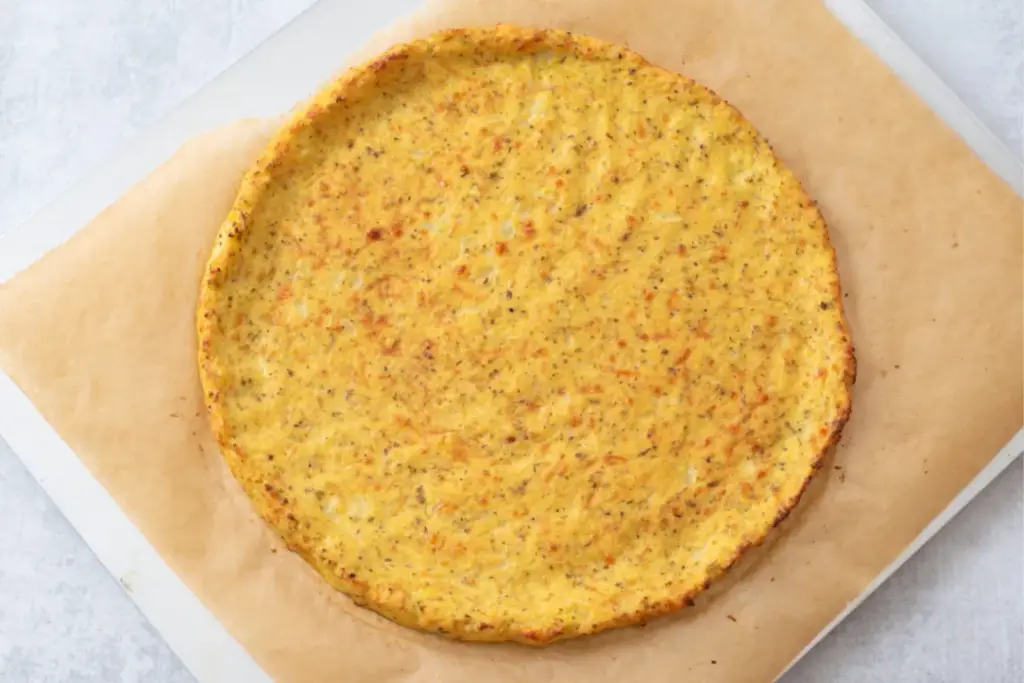
Taco soup, a hearty and flavorful dish inspired by the vibrant flavors of Mexican cuisine, is a popular choice for those seeking a comforting and satisfying meal. Packed with ingredients such as ground beef, beans, corn, tomatoes, and a medley of spices, taco soup offers a delightful blend of textures and a delicious balance of flavors.
If you find yourself with a surplus of taco soup or want to prepare it in advance for easy meal planning, freezing it can be a convenient option. Freezing taco soup not only allows you to preserve its deliciousness but also provides you with a ready-made meal whenever you crave a taste of Tex-Mex goodness. In this guide, we will explore the best methods for freezing taco soup, ensuring that you can enjoy its hearty goodness and savor the flavors of Mexico at any time.
Here are the simple steps for freezing taco soup:
Step 1: Allow the taco soup to cool down completely
Allowing the taco soup to cool down completely is essential for several reasons. Firstly, it prevents any potential burns or injuries that may occur from handling hot soup. Secondly, cooling down the soup helps to stop the cooking process and prevent overcooking, ensuring that the flavors and textures of the ingredients are preserved.
Additionally, allowing the soup to cool allows the flavors to meld together, enhancing the overall taste of the dish. Cooling the soup also makes it easier to store, as hot soup can generate condensation in storage containers, leading to potential spoilage or freezer burn.
Lastly, cooling the soup allows any excess fat or grease to solidify on the surface, making it easier to skim off and reduce the overall fat content of the dish. To cool the taco soup, simply remove it from the heat source and let it sit at room temperature until it reaches a safe temperature for refrigeration or freezing.
Step 2: Decide on portion sizes and prepare airtight containers.
Deciding on portion sizes and preparing airtight containers or freezer bags is an important step in storing taco soup effectively. By portioning the soup, you can conveniently defrost and enjoy individual servings without having to thaw the entire batch. Here’s how to do it:
- Determine portion sizes: Consider how much soup you typically consume in one sitting or how many people you’ll be serving. This will help you decide on appropriate portion sizes. Common options include single servings, family-sized portions, or any size that suits your needs.
- Choose suitable containers: Opt for airtight containers or freezer bags specifically designed for food storage. Make sure they are clean and in good condition to maintain the quality and prevent any leakage.
- Portion the soup: Ladle or pour the cooled taco soup into the containers, leaving some headspace to allow for expansion during freezing. Avoid overfilling to prevent leaks or spills. If using freezer bags, fill them to an appropriate level and squeeze out any excess air before sealing.
- Seal tightly: Ensure a proper seal to prevent air from entering and freezer burn from occurring. For containers, close the lids tightly, and if using freezer bags, remove as much air as possible before sealing them securely.
Step 3: Ladle the cooled taco soup into the containers.
Ladling the cooled taco soup into the containers or bags while leaving some headspace is crucial for successful storage and freezing. Here’s why and how to do it:
- Use a ladle: A ladle is an ideal tool for transferring the soup from the pot to the containers or bags. Its deep bowl shape allows you to scoop and pour the soup accurately.
- Leave headspace: Leave some space at the top of each container or bag to accommodate the expansion during freezing. As a general guideline, leave about 1/2 to 1 inch (1.3 to 2.5 cm) of headspace.
- Fill containers or bags: Fill each container or bag with the desired amount of soup. Be careful not to overfill, as this can lead to spills or difficulty sealing the containers.
- Remove air (for bags): If using freezer bags, press out any excess air before sealing them. This helps prevent freezer burn and maintains the quality of the soup.
Step 4: Seal the containers.
This step plays a crucial role in preserving the soup’s quality, flavor, and texture over an extended period. Here’s a detailed explanation of why and how to accomplish this:
Why it’s important:
- Air Exposure: Sealing containers tightly or removing excess air from freezer bags creates a barrier that prevents air from coming into contact with the soup. Air exposure can lead to oxidation, which causes the soup to deteriorate in flavor and quality over time. By eliminating air, you reduce the chances of spoilage and maintain the soup’s freshness.
- Freezer Burn Prevention: Freezer burn occurs when moisture from the soup evaporates at the surface, resulting in dry, discolored areas. It negatively impacts the taste and texture of the soup. Removing excess air reduces the amount of moisture available in the storage container or bag, minimizing the risk of freezer burn.
How to seal containers tightly and remove excess air from freezer bags:
- Containers: If you are using airtight containers, ensure that the lids or covers are clean and in good condition. Place the cooled taco soup into the container, leaving some headspace to allow for expansion during freezing. Press the lid or cover firmly onto the container, ensuring a secure and tight seal. Check for any gaps or leaks and adjust as needed.
- Freezer Bags: If using freezer bags, opt for high-quality ones specifically designed for freezing. Fill the bag with the cooled taco soup, leaving some space at the top to accommodate expansion. Squeeze out as much air as possible from the bag, starting from the bottom and moving upwards. Once most of the air is removed, seal the bag tightly. Consider using the double-bagging method for added protection by placing the filled bag into a second bag before sealing.
- Vacuum Sealing (optional): For an extra layer of protection, you can use a vacuum sealer to remove air completely from the containers or bags. Vacuum sealing removes air more effectively, reducing the risk of freezer burn and maintaining the soup’s quality for an extended period. Follow the manufacturer’s instructions for your specific vacuum sealer.
Step 5: Label each container.
This step helps you keep track of the soup’s freshness and allows for efficient organization in your freezer or refrigerator.
How to label containers or bags:
- Use waterproof labels or markers: Choose waterproof labels or permanent markers to ensure that the labels do not smudge or fade over time. Alternatively, you can use freezer-safe tape or labels that adhere well to the containers or bags.
- Date of preparation: Write the date of preparation on the label, indicating when the taco soup was made. This helps you track the freshness and age of the soup.
- Contents description: Clearly state the contents of each container or bag. For example, you can write “Taco Soup” or provide more specific details like “Chicken Taco Soup” or “Vegetarian Taco Soup.” This allows for easy identification, especially if you have multiple varieties of soup stored.
- Placement: Attach the label to a visible area on the container or bag. If using bags, consider placing the label on the front or using a clip or binder to secure it to the bag. For containers, you can place the label on the lid or side. Additional information (optional): If desired, you can include additional information on the label, such as portion size or any special instructions for reheating or serving the soup.
Step 6: Place the labeled taco soup containers in the freezer.
Placing the labeled taco soup containers or bags in the freezer is the final step in the storage process, ensuring long-term preservation and easy access to your soup.
How to place the labeled containers in the freezer:
- Organize the freezer: Before placing the taco soup in the freezer, make sure your freezer is clean and well-organized. Remove any clutter and create space for the containers or bags to be placed flat or stacked neatly.
- Arrange freezer bags: If using freezer bags, lay them flat in a single layer, ensuring they are not overlapping or stacked on top of each other. This allows for even freezing and makes it easier to separate individual bags when needed.
- Leave space for circulation: Ensure there is enough space between the containers or bags to allow for proper air circulation. This facilitates efficient freezing and helps maintain the quality of the soup.
- Close the freezer: Once the labeled taco soup containers or bags are placed in the freezer, close the freezer door securely. This ensures a consistent freezing temperature and minimizes the risk of temperature fluctuations that can affect the soup’s quality.
How long can I keep frozen taco soup before it starts to lose its quality?
Frozen taco soup can maintain its quality for up to 3-4 months when stored properly. Beyond this timeframe, the soup may start to deteriorate in taste and texture. To ensure optimal quality, make sure to package the soup in airtight containers or freezer bags, removing as much air as possible. Proper storage conditions, such as a consistently cold temperature of 0°F (-18°C), are crucial for maintaining the soup’s flavor and texture over an extended period. Regularly checking and labeling the date of freezing can help you keep track of the soup’s freshness.
Other related questions
How do I defrost taco soup?
To defrost taco soup, transfer it from the freezer to the refrigerator and allow it to thaw overnight. Alternatively, you can place the frozen soup in a microwave-safe container and use the defrost setting on your microwave. Another option is to put the frozen soup in a pot on the stove over low heat, stirring occasionally until fully thawed. Avoid defrosting taco soup at room temperature to prevent bacterial growth. Once thawed, reheat the soup on the stovetop or in the microwave, ensuring it reaches a safe internal temperature before serving.
Can I refreeze taco soup after it has been thawed?
It is generally not recommended to refreeze taco soup after it has been thawed. Each time you freeze and thaw the soup, its quality and taste may gradually deteriorate. Moreover, the process of thawing and refreezing can increase the risk of bacterial growth and compromise food safety. If you have thawed more taco soup than you can consume, it’s best to portion it out before freezing and only thaw the amount you need for a single serving. This way, you can minimize waste and ensure that the soup maintains its quality throughout its storage time.
How do I know if my frozen taco soup has gone bad?
To determine if your frozen taco soup has gone bad, examine its appearance, smell, and taste. If the soup has developed an off-putting color, such as a significant change in hue or the presence of mold, it is likely spoiled. A foul or sour odor is also an indication of spoilage. Additionally, if the soup has an unusual texture, sliminess, or an unpleasant taste, it is best to discard it. When in doubt, trust your senses and prioritize food safety. It is better to err on the side of caution and dispose of any taco soup that appears or smells questionable to avoid potential foodborne illnesses.
Can I use frozen taco soup with the fresh ones?
Yes, you can use frozen taco soup alongside fresh ones. Simply thaw the frozen soup in the refrigerator overnight or use the defrost setting in the microwave. Once thawed, you can heat it up on the stove or in the microwave. Mixing fresh and frozen taco soup together allows you to enjoy the convenience of the frozen portion while incorporating the freshness of the freshly made soup. Just ensure that the frozen soup is fully heated before combining it with the fresh soup, and remember to adjust the seasoning and spices if needed.
Can I freeze taco soup with all the ingredients, including the toppings?
It is generally recommended to freeze taco soup without the toppings. Toppings like cheese, sour cream, and cilantro can change in texture and flavor when frozen and thawed. It’s best to add the toppings fresh after reheating the frozen taco soup to preserve their desired consistency and taste. However, if you prefer to include toppings, you can freeze the soup with them, but be aware that they may not retain their original quality after thawing. Consider adding the toppings when serving the soup instead.
Can I freeze taco soup that has been seasoned with fresh herbs or spices?
Yes, you can freeze taco soup that has been seasoned with fresh herbs or spices. However, it’s important to note that the flavors of fresh herbs and spices may diminish during freezing and thawing. To minimize flavor loss, consider adding the herbs and spices when reheating the soup instead of including them during the freezing process. This will help ensure that the soup maintains its desired taste and aroma. Alternatively, you can freeze the soup with the seasonings if you don’t mind potential flavor changes. It’s a matter of personal preference and the level of flavor intensity you desire in the final dish.








